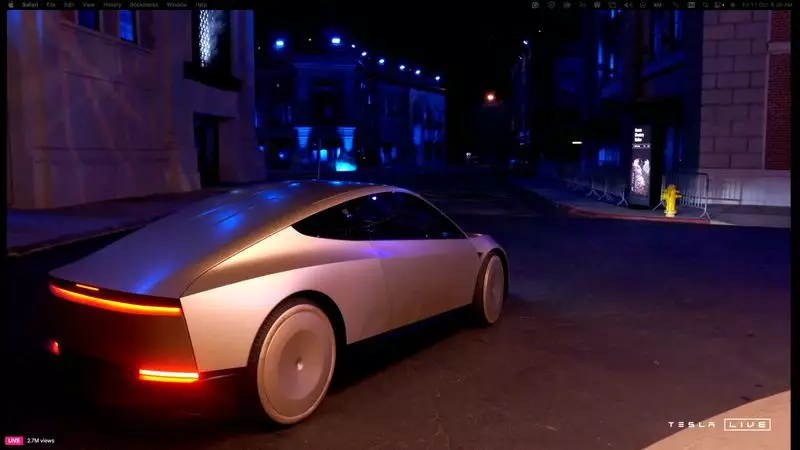In a highly anticipated event that could redefine urban transportation, Tesla CEO Elon Musk introduced the world to its next generation of autonomous vehicles: the Cybercab. This robotaxi, which boasts futuristic gull-wing doors and eliminates the need for steering wheels or pedals, represents Musk’s ambitious vision for the future of transportation. Scheduled to hit production lines by 2026 with a target price of under $30,000, the Cybercab aims to revolutionize personal mobility by enabling a more efficient and cost-effective way for people to travel, at a cost of just 20 cents per mile.
During the presentation at Warner Bros studio in Los Angeles, Musk encapsulated his vision of a world where cars become productive assets rather than idle machines. He articulated that the majority of the time, cars are stationary, and by employing autonomous technology, Tesla vehicles could potentially be utilized significantly more, thus increasing their value. These sentiments reflect a broader trend towards shared mobility solutions and the increasing shift towards autonomous driving technologies, which Musk believes can propel Tesla into new realms of growth.
Riding the Wave of Investor Speculation
The unveiling of the Cybercab was not just a technical showcase but also an expression of Musk’s broader strategy to transform Tesla’s identity from merely an automaker to a leader in artificial intelligence and robotics. The event, cleverly dubbed “We, Robot,” echoes the themes of autonomy and robotics as envisioned by Isaac Asimov. Attendees included notable investors and analysts, all eager to dissect Musk’s ambitious plans. However, there is palpable caution in the air, as many in the investment community are concerned about the underlying technologies and timelines associated with the production and deployment of robotaxis.
While the marketing strategy appears optimistic, challenges remain. Analysts and industry experts are keenly scrutinizing Tesla’s plans, focusing on the feasibility of ramping up production, operational costs, and, most importantly, profitability in the taxi service market. In an increasingly competitive landscape filled with established players like Waymo, whose robotaxis are already operational in select cities, the pressure is mounting on Tesla to deliver.
Musk’s reputation for being overly ambitious has faced scrutiny over the years. Back in 2019, he declared a high level of confidence that Tesla would roll out operational robotaxis by the following year. Yet, as the years rolled by, those promises remained unfulfilled, forcing Musk to recalibrate his vision. With Tesla reportedly on the cusp of experiencing its first yearly decline in vehicle deliveries, the company’s shift in focus to the Cybercab underscores an urgent need to revitalize its declining sales strategies and broaden its EV lineup. This includes consideration of the long-touted, budget-friendly electric vehicle that could attract a wider consumer base.
Tesla’s strategy hinges on overcoming significant barriers. The autonomous vehicle sector has seen billions of dollars lost, primarily due to the technical complexities and stringent regulations that govern the industry. Companies such as General Motors with its Cruise division and Amazon’s Zoox have faced obstacles, leading to a mixed bag of outcomes for various players in the market.
One of the more controversial aspects of Tesla’s approach is its reliance on cameras and AI to underpin its Full Self-Driving (FSD) technology, as opposed to expensive scanning hardware like lidar. While this strategy aims to keep overheads low, questions surround the adequacy of such technology in ensuring safety and regulatory compliance. Regulatory scrutiny has increased following several high-profile accidents involving autonomous vehicles, and the path to earning public trust in this technology will be fraught with challenges.
Looking to the future, the success of Tesla’s Cybercab initiative will depend not only on its technological advancements but also on navigating the complex regulatory landscape and proving to both regulators and consumers that autonomous driving is safe and reliable. As Musk and his team forge ahead in this transformative vision of transportation, the coming years will be critical in determining whether Tesla can achieve its ambitions or become another cautionary tale in the heavily scrutinized realm of autonomous vehicles.
Tesla’s bold initiative to develop Cybercabs marks a pivotal moment in the evolution of mobility, blending innovation with ambition. Whether this vision will materialize into reality remains to be seen as both excitement and skepticism swirl in equal measure around Elon Musk’s latest venture.

